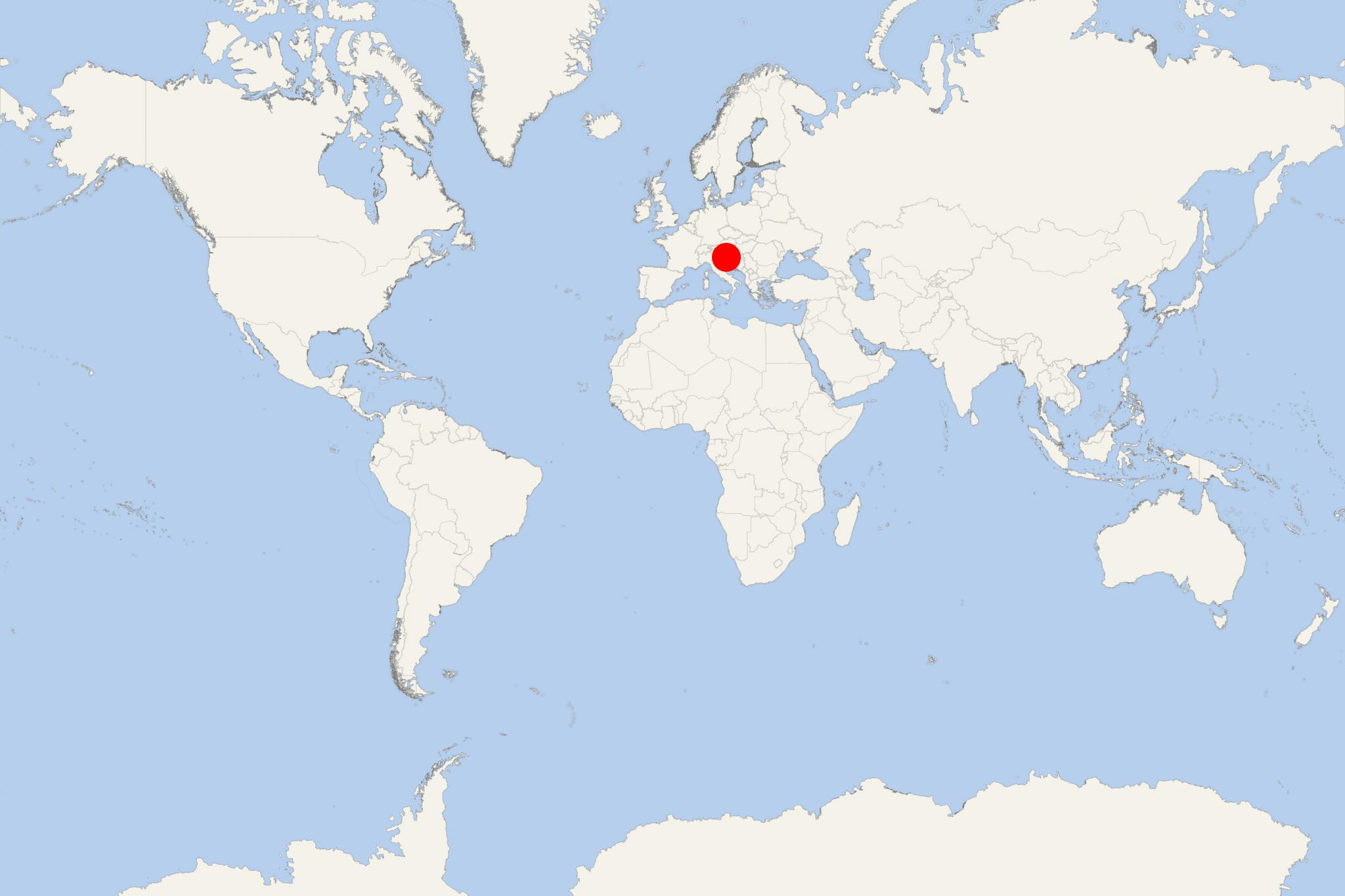Rijeka (Croatia)
Cruise Port schedule, live map, terminals, news
Region
Mediterranean - Black Sea
Local Time
2025-10-28 08:30
 51°F
51°F 10.5°C

 Very Light
Very Light1.4 m/s
 59 °F / 15 °C
59 °F / 15 °C 38 °F / 4 °C
Port Rijeka cruise ship schedule shows timetable calendars of all arrival and departure dates by month. The port's schedule lists all ships (in links) with cruises going to or leaving from Rijeka, Croatia. To see the full itineraries (ports of call dates and arrival / departure times) and their lowest rates – just follow the corresponding ship-link.
| Day | Ship | Arrival | Departure |
|---|---|---|---|
| 4 April, 2025 Friday | 09:00 | 18:00 | |
| 12 April, 2025 Saturday | 07:00 | 20:00 | |
| 27 April, 2025 Sunday | 10:00 | 19:00 |
Rijeka (port locode HRRJK) is Croatia's principal/largest seaport, Adriatic Sea cruise port and large city. which by population (around 130,000, metro over 245,000) is ranked the country's 3rd-largest - following the capital Zagreb and Split. The port is located on Kvarner Bay, approx 360 km (220 mi) from Venice Italy. Other major Croatian passenger (cruise and ferry) ports are Dubrovnik, Split, Zadar, Sibenik.
Rijeka's economy is largely dependent on shipbuilding and maritime transport. Historically, due to its strategic position and excellent deepwater port, the town was ferociously contested, especially between Croatia, Italy and Hungary (serving as the Kingdom of Hungary's biggest and most important port), changing hands many times over centuries. Currently, the majority of citizens (~85%) are Croats, along with Italians, Serbs, and Bosniaks.
Port Rijeka is Croatia's largest seaport in terms of cargo shipping traffic. Statistics for 2015 show nearly 11 million tons of cargo handled, mostly refined petroleum products and crude oil, general and bulk cargoes and TEU-containers. The port is managed by Port of Rijeka Authority. The first record of Port Rijeka dates back to 1281. In 1719, Port of Rijeka was granted the charter as free port. Regularly-scheduled connections via ferries exist between Rijeka and surrounding cities and islands, but there are no direct international passenger ship connections. Coastal lines to Split and Dubrovnik operate twice-weekly services and provide international connections.
In 2016, the city was selected as European Capital of Culture for 2020, along with Galway Ireland.
Part of Port Rijeka is the AGCT (Adriatic Gate Container Terminal) - Croatian subsidiary of ICTSI (International Container Terminal Services Inc / 1987-founded global port management company headquartered in Manila Philippines). In June 2019, AGCT initiated a two-phase terminal expansion project, with a scheduled completion date of June 2020. The project included dredging of 130 m of quay (over Berths 1 and 2) to allow berthing of larger boxships (with LOA length up to 400 m / 1312 ft) to a total berth length 438 m (1437 ft) and quayside water depth / max draught 16,5 m (54 ft). Infrastructure works included ship handling systems and upgrading terminal's IT systems. AGCT is the Northern Adriatic Sea's first terminal able to handle ULCV (ultra-large container vessels) with max cargo capacity 20,000 TEUs.
As of 2019, the terminal's annual TEU capacity was 600,000 containers. AGCT has direct road and rail connections (serving container trucks) to the highway, with an average dwell time 13 min (export cycle) and 19 min (import cycle). Approx 40% of AGCT’s annual container throughput is via rail (expected increase to 60%). Railways link to Zagreb, also to Hungary, Serbia, and Bosnia-Herzegovina.
On November 5, 2021, ENNA Group (Croatian investment company) and APM Terminals (global container terminal operator) via the joint venture Rijeka Gateway signed an agreement for the development (design and construction) and operation (under a 50-year concession) of a new container terminal in Port Rijeka.
- Rijeka Gateway's ownership is APM (51%) and ENNA (49%).
- The new terminal is scheduled for inauguration within 3,5 years (Phase 1/construction) and to have an annual capacity 1,055 million TEUs.
- Rijeka Gateway Terminal has 1x berth (quay length 680 m / 2231 ft) and is served by 4x STS (ship-to-shore cranes) with capacity to handle ULCC (Ultra Large Container Carriers) with max load 24000 TEUs.
- The Terminal will also have a direct rail connection with Croatia's railroad network.
The city's economy is largely based on shipbuilding. Here are located the shipyards "3 Maj" and "Viktor Lenac".
3 Maj Shipyard (Rijeka)
3 Maj ("Third May Shipyard") builds mainly oil tankers, bulk cargo vessels and container ships. Occasionally, it also constructs smaller passenger ships, ferries and superyachts.
The 3 Maj yard employs approx 2900 workers. Its first docks were built in 1892 and leased by a German company under the name "Howaldtswerke". In 1902, after the German rent expired, the yard had low activity. In 1905, three Hungarian businessmen resumed the yard's operations (under the name "Danubius"). In 1920, the yard was leased by an Italian company and renamed to "Cantieri Navali del Quarnaro".
During WW2 (1939-1945), the shipyard was destroyed, and following the war had to be completely rebuilt. Then it was renamed to "Kvarnersko Brodogradiliste", later renamed to "3 Maj" (in memory of May 3, 1945, when the town was freed from German occupation)
When Croatia was part of Yugoslavia, the shipyard was one of the Mediterranean's largest, employing around 4500 workers at full capacity.
MKM Yachts (Scenic Group)
MKM Yachts, the shipbuilding division of the shipowner Scenic Group, operates at the 3. Maj shipyard as a sub-concessionaire (long-term industrial partner), not as a shipyard owner.
In July 2020, Scenig Group signed a formal 10-year sub-concession (cooperation) agreement giving MKM Yachts use of roughly 21,400–21,500 m2 of the yard’s land+sea area to build Scenic’s superyachts, including Scenic Eclipse II (2020) and Scenic Ikon (2028).
Financial terms reported by the Croatian government and media sources included a fixed fee of 3 HRK/kunas (EUR 0,4) per m2 per year plus a variable fee equal to 1% of MKM’s annual revenue for the sub-concession area.
The MKM-3 Maj cooperation covers the construction and outfitting of Scenic’s expedition yachts and ongoing newbuild projects overseen by MKM Yachts.
Viktor Lenac Shipyard (Rijeka)
Viktor Lenac Shipyard is approximately 3 km / 2 mi from Port Rijeka. The shipyard was among the world's first to make ship lengthenings. It has all 3 floating drydocks, 1 drydock for vessels with DWT up to 160,000 tons, over 1 km of berthing/quays, and a large offshore construction site.
Currently, Viktor Lenac Shipyard specializes in ship conversions and offshore gas platform construction.
The yard was founded in 1896 (under the name "Lazarus") as a ship repair facility serving vessels of the Austro-Hungarian Empire's fleet. In 1948, the shipyard was nationalized and renamed "Viktor Lenac".
In the late 1960s, the yard was moved 3 km / 2 mi to the south to its current location, which had a deeper draught. After purchasing 2 floating drydocks and cranes, the yard developed shiprepair, vessel conversion, and offshore platform capabilities. Today, Viktor Lenac Shipyard is Croatia's only privately owned shipyard.
After being rescued several times by Croatian government guarantees, in November 2003, the company filed for bankruptcy, reporting debts of EUR 102 million. The process was completed in 2008.
Since 2008, the currently owned by "Tankerska plovidba" (the country's largest shipping company) shipyard is Croatia's largest, followed by Uljanik Shipyard in Pula, which is the country's builder of RoRo vessels/car carriers, and dredging ships.
Since 2009, following a major refurbishment, Floating Dock 11 can accommodate Suezmax vessels.
- Cruise Industry
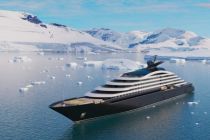
Scenic Cruises' newest superyacht Scenic Ikon debuts in 2028
The Scenic Ikon has been formally announced by Scenic Group as its next ultra-luxury expedition superyacht, scheduled for its inaugural debut in...
October 22, 2025 - Cruise Industry
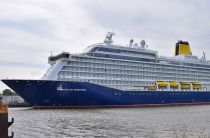
Saga Cruises UK unveils immersive Winter 2026 itineraries with all-inclusive shore excursions
The UK-based Saga Cruises has unveiled a fresh collection of itineraries for Winter 2026, now featuring inclusive excursions at every port. New...
November 7, 2024 - Cruise Industry
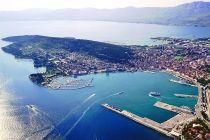
€390M boost set for Adriatic cruise and ferry infrastructure by 2026
Investment in Adriatic maritime tourism infrastructure is projected to exceed EUR 390 million (US$399 million) between 2024 and 2026, as per the...
October 31, 2024 - Cruise Industry
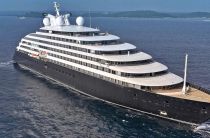
Superyacht Scenic Eclipse II started the Maiden Voyage from Lisbon to Barcelona
Scenic Eclipse II, built by 3. Maj. Shipyard in Rijeka (Croatia), has been delivered and arrived in Lisbon (Portugal) for the inaugural voyage. The...
April 13, 2023 - Cruise Industry

NASA scientist Kathy Sullivan to serve as Godmother of Scenic Cruises' newest superyacht Scenic...
Acclaimed NASA scientist Dr. Kathryn Dwyer Sullivan/Kathy Sullivan has been named Godmother to Scenic Cruises’ new "Discovery Yacht" Scenic...
December 7, 2022 - Cruise Industry
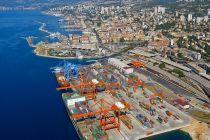
Port Rijeka (Croatia) welcomes TUI's cruise ships Mein Schiff 5 and Marella Explorer 2
On Saturday morning, July 30, two large passenger liners - TUI's Mein Schiff 5 and Marella UK's Marella Explorer 2, and 10+ smaller cruise ships...
July 31, 2022 - Cruise Industry

Mein Schiff 5 and Marella Explorer 2 dock in Rijeka (Croatia) with ~4,000 passengers onboard
A couple of cruise ships, Marella Cruises' Marella Explorer 2 and TUI Cruises' Mein Schiff 5, docked in the northern Croatian Adriatic port city of...
July 3, 2022 - Cruise Industry

VIDEO: Scenic Eclipse 2 floatеd out at 3. maj shipyard in Croatia
Scenic Cruises' newest Discovery Yacht, Scenic Eclipse 2, floated out for the first time at 3. maj shipyard in Croatia/Rijeka (part of Uljanik...
July 1, 2022 - Cruise Industry

VIDEO: First Look at Scenic Eclipse 2 - Ultra-Luxury Yacht Building Timelapse
Luxury cruise line Scenic Cruises unveiled a new timelapse video chronicling the construction of its newest Discovery Yacht, Scenic Eclipse 2, which...
June 20, 2022 - Accidents
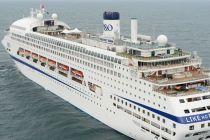
Ambassador Cruise Line delays the launch of its first ship, Ambience
Ambassador Cruise Line UK delayed the launch of its first ship, Ambience, due to the crisis in Ukraine taking its toll on the supply chain that was...
March 27, 2022 - show more news
